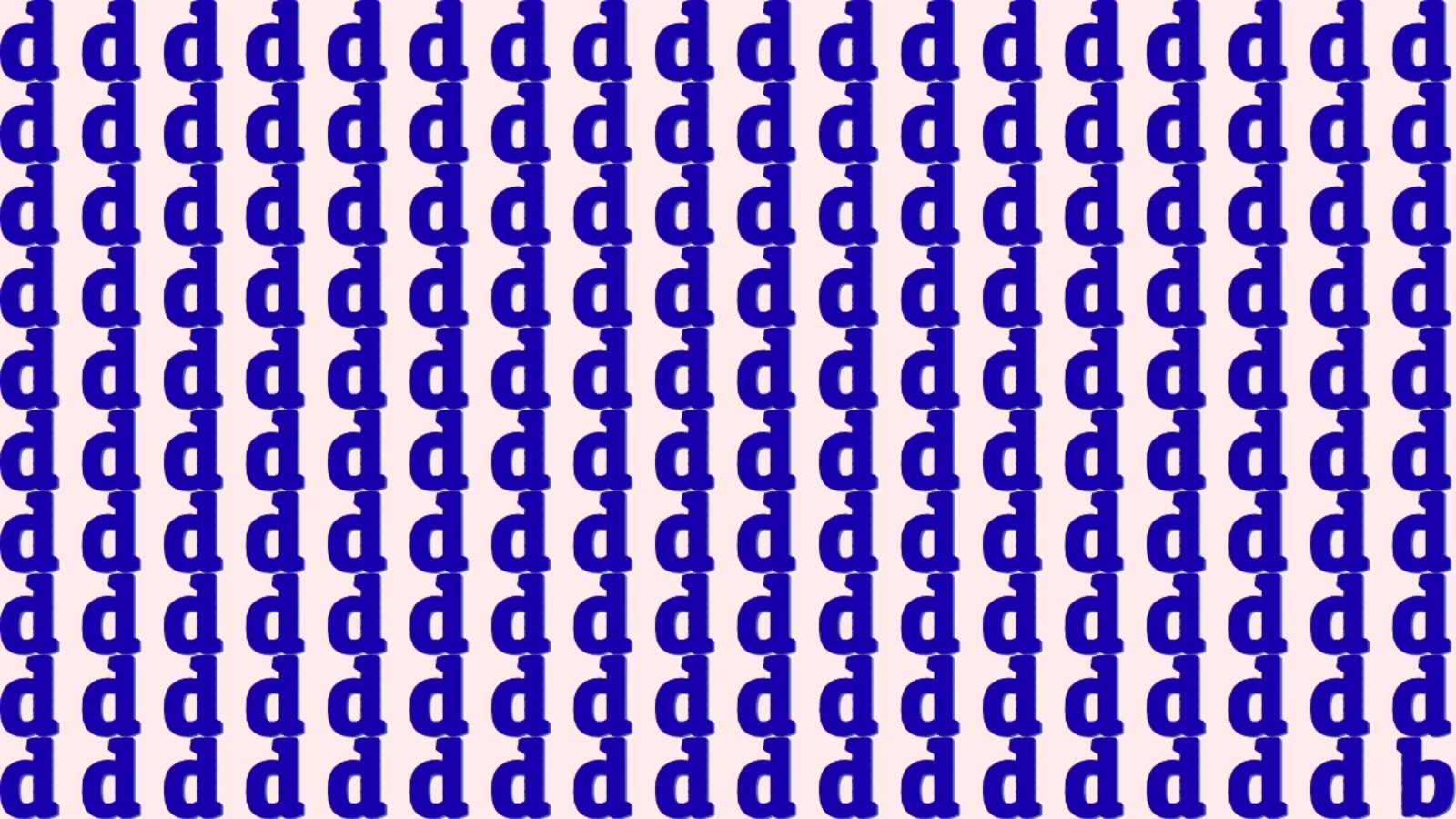Australians have always had a soft spot for quirky puzzles, crosswords, and visual tricks that challenge quick thinking. Now, a new optical illusion has been making waves online: Can you spot the hidden letter B among a sea of Ds? The puzzle appears deceptively simple, but its difficulty lies in how similar the letters appear when crowded together in a tight grid.
At first glance, the entire image looks uniform, with rows of neatly stacked Ds filling the screen. But tucked away in the arrangement is a single, elusive B waiting to be found. For many, the search has become more than just a casual pastime—it’s a test of patience, observation, and a reminder of how the brain interprets patterns.
Why People Love Optical Illusions

Optical illusions often go viral because they tap into human curiosity. The brain is naturally wired to look for patterns, yet small differences, like the straight line on the letter B compared to the curve of a D, can escape notice. Visual puzzles like this force people to slow down and re-focus, something many find oddly satisfying.
Experts in perception say illusions work because they exploit cognitive shortcuts. Our brains take in visual information quickly, sometimes at the expense of accuracy. As a result, while scanning rows of letters, we think we are seeing the same thing repeatedly when, in fact, a small difference has slipped past us.
The Social Media Buzz
The “hidden B” puzzle has generated plenty of chatter across Australian social media platforms. In Facebook community groups and TikTok clips, users share screenshots of the puzzle and compare how long it takes them to pinpoint the odd letter out.
Some claim to identify the B within seconds, while others admit to scrolling past the puzzle several times before realising they hadn’t spotted it at all. “It’s one of those things where you feel like you’ve gone blind when you can’t see it immediately,” one Melbourne commenter joked on X (formerly Twitter). Another added, “I found it in less than five seconds—maybe I should try an eye test as a career!”
Friendly rivalry has only fuelled the popularity further. Families are turning it into a mealtime competition, while teachers have even used it as a warm-up exercise in classrooms across Sydney and Brisbane.
A Test Beyond Just Fun
Although the puzzle is light-hearted, perception challenges like this also highlight the complexity of human vision. Psychologists note that exercises in observation can improve attention to detail, memory retention, and even stress relief. For older Australians, especially those keen on keeping their cognitive health sharp, these puzzles provide a stimulating form of mental exercise.
Dr. Helen Moore, a cognitive science lecturer at the University of Adelaide, explains: “When we look at repetitive patterns, our brains tend to switch into autopilot. Spotting something unusual takes active concentration. These kinds of puzzles demonstrate how attention and perception work hand-in-hand, and how easily we can overlook the obvious.”
Not as Easy as It Looks
While some puzzle-goers boast fast completion times, many admit to spending several minutes without success. The illusion is tricky because the B and D share almost identical shapes. With compressed rows in black-and-white patterns, the visual fatigue sets in quickly. The longer someone stares, the harder it can get.
Optical illusion experts say the best approach is to break the problem into smaller sections. Instead of scanning the full grid in one go, try dividing the letters into blocks of four or five rows, moving systematically across. This structured search makes the B stand out more clearly, avoiding the brain’s tendency to gloss over minute details.
Optical Illusion Answer

Much like the viral “Where’s Wally” books or past challenges like the dress colour debate, the hidden-letter optical illusion has become a shared cultural moment. Whether tackled alone during a morning coffee break or posted in online forums for bragging rights, the “B among the Ds” puzzle has proven once again that Australians love a good mental contest.
In the end, it’s not just about whether you can spot the hidden letter—it’s about the joy of slowing down, focusing, and surprising yourself when the tricky detail finally comes into view. After all, puzzles like these are a reminder that sometimes the smallest differences make the biggest impact.